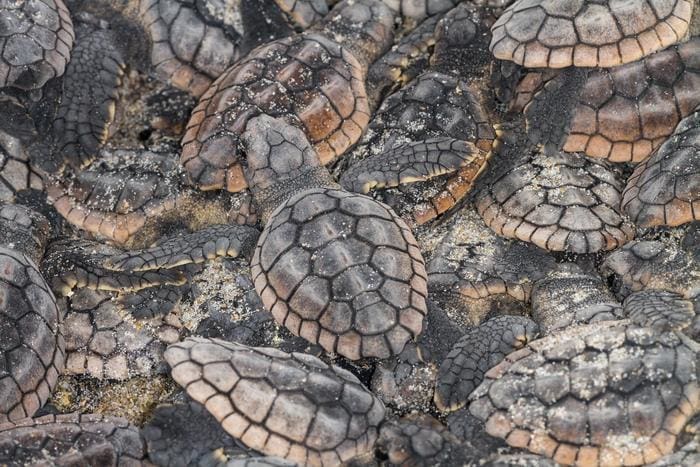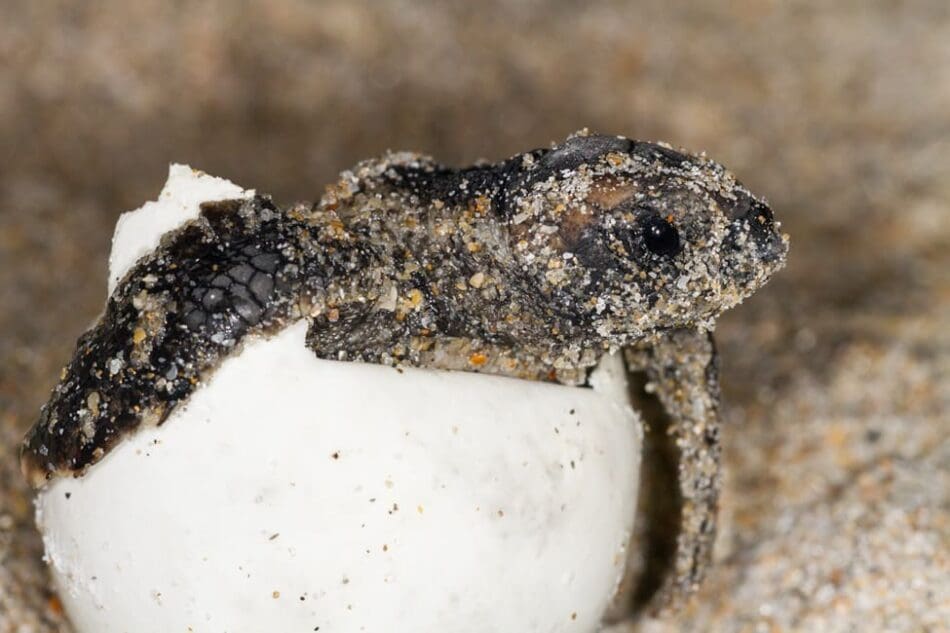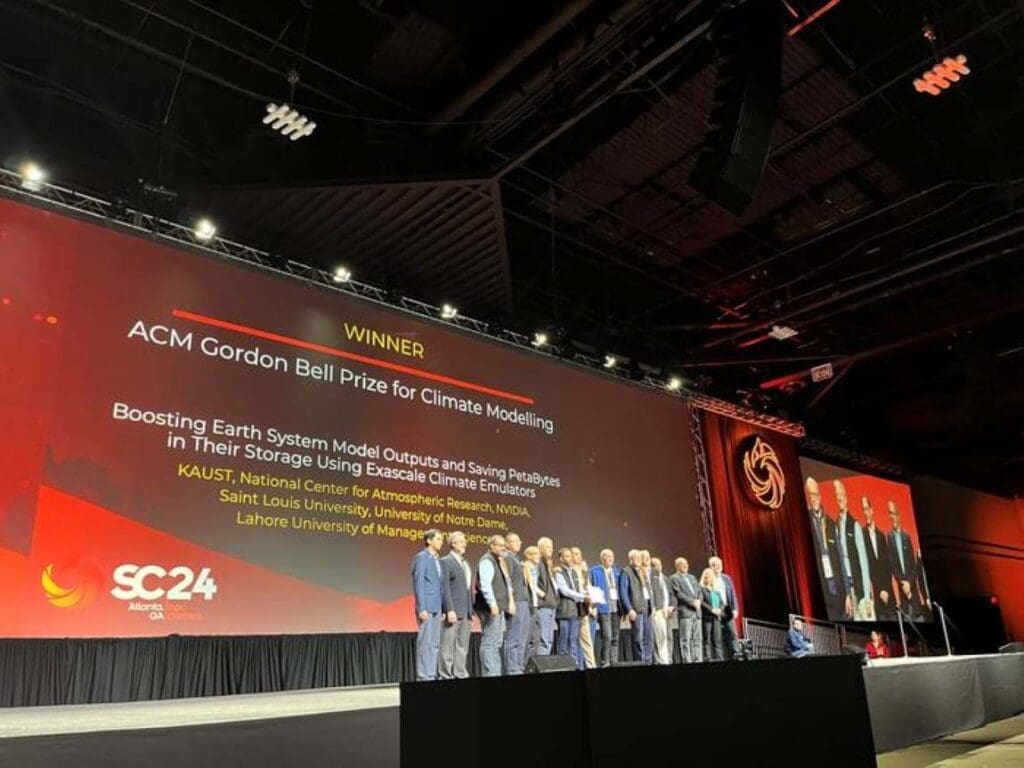Sea turtles, after laying their eggs and covering them with sand, leave their offspring to develop and hatch without any parental care. The odds of survival are grim, with only about one in 1,000 hatchlings reaching adulthood. A key factor in this survival is hatchling size – larger hatchlings, which can move faster, spend less time vulnerable to predators on the beach, thus increasing their chances of survival.

Recent research has emphasized the significance of temperature on the development of sea turtle hatchlings. Cooler temperatures tend to produce larger, heavier hatchlings with a higher proportion of males, while warmer conditions accelerate hatching and offer some protection from predators.
However, a new study led by the University of Tübingen, in collaboration with Florida Atlantic University (FAU), suggests that fluctuating rainfall may play an even more crucial role than temperature in determining the size of hatchlings.
The study, published in BMC Ecology and Evolution, involved data collection from 37 beaches worldwide, including a longitudinal study in Florida and experimental work on the Cape Verde Islands. The findings indicate that rainfall is a better predictor of hatchling body size than temperature.
Rainfall cools the beach surface and provides essential moisture for egg development, but its impact varies between species. For loggerhead turtles (Caretta caretta), increased rainfall results in smaller carapaces but greater body weight, while green turtle (Chelonia mydas) hatchlings exhibit smaller carapaces without changes in body mass.
Dr. Jeanette Wyneken, a co-author of the study and professor at Florida Atlantic University’s Charles E. Schmidt College of Science, noted the implications of these findings for conservation efforts. “Findings from our study highlight the need for more localized data on how regional weather influences incubation and hatchling development,” Wyneken said. “These data are essential for refining conservation strategies to protect sea turtles amidst global warming.”
The research underscores the importance of balancing temperature and moisture for the health of these endangered species. While cooler and moister conditions generally result in stronger hatchlings, too much moisture can be deadly for embryos. As climate change alters global rainfall patterns – making wet areas wetter and dry areas drier – the impact on sea turtle nesting sites could be significant.
The study’s results suggest that global conservation strategies for loggerhead and green sea turtles may need updating to account for changing rainfall patterns. “Effective management units for conservation should focus on regularly updating and including important nesting sites, highlighting the importance of local conservation efforts,” Wyneken added. She emphasized the necessity of analyzing local data from various nesting sites to better understand sea turtle nesting patterns and support conservation efforts.
***
The research is supported by the German Research Foundation (Deutsche Forschungsgemeinschaft WE 5440/6-1).
Florida Atlantic University, established in 1961, officially opened its doors in 1964 as the fifth public university in Florida. Today, the University serves more than 30,000 undergraduate and graduate students across six campuses located along the southeast Florida coast. In recent years, the University has doubled its research expenditures and outpaced its peers in student achievement rates.
Journal Reference:
Regalado Fernández, O.R., Parsi-Pour, P., Nyakatura, J.A. et al. ‘Correlations between local geoclimatic variables and hatchling body size in the sea turtles Caretta caretta and Chelonia mydas’, BMC Ecology and Evolution 24, 108 (2024). DOI: 10.1186/s12862-024-02290-7
Article Source:
Press Release/Material by Florida Atlantic University (FAU)
Featured image: A loggerhead sea turtle hatchling emerges from the egg. Credit: Jay Paredes | FAU




